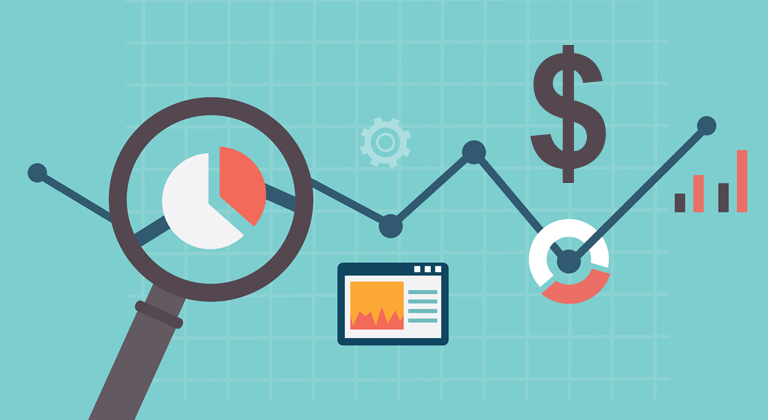Minding the Statistics: Key Ad Metrics to Focus On
Whether you’re diving into Facebook ads or navigating Amazon’s advertising platform, understanding, interpreting and optimizing key ad metrics like CPC, CTR, Conversions, RoAS, Frequency and DPV can make all the difference in your marketing efforts.
This week, Ginger is breaking all of these acronyms and confusing terms down as he attempts to lay out the main advertising metrics that authors should be paying attention to – which is in response to a very recent question posed to us via email. Once you have a deeper understanding of how these metrics play a part in the success of your campaign, you’ll be able to fine-tune your ads, maximize your book sales and reach new heights of success.
Recently, we received an email from a reader and thought it would be a great topic for a blog post. The email read:
I’d love to see a story about “minding the statistics”. Like, what metrics we should (or shouldn’t) be paying attention to. I realize there’s a lot of “it depends” in there (it depends on where you’re advertising, how many books you have, etc.). But what metrics do you and Ginger regularly track?
What a great question! And it’s one that’s more relevant than ever – especially considering that Amazon continues to embrace paid advertising, and Google and Apple continue to make it difficult to buy eBooks directly through the Amazon mobile app. These days, self-published authors need all the help they can get to run advertising profitably – and understanding what metrics to keep track of are the key to that!
Which Advertising Platforms are we looking at?
There are lots of different approaches towards advertising that authors can take, so I’m going to focus on the two platforms that tend to be the most popular, and arguably the ones that are easiest to find success with: Facebook and Advertising on Amazon.
Both of these platforms are powerful tools for promoting and selling books – especially in conjunction with each other. In fact, I’d argue that Facebook and Amazon advertising have become indispensable tools in the arsenal of authors looking to boost their book sales.
However, to make the most of them, we self-published authors need to focus on the right ad metrics. Here’s where to start:
Cost per Click (CPC)
Cost per Click (CPC) measures the price you pay each time a user clicks on your Facebook or Advertising on Amazon ad. For self-published authors, understanding CPC is vital for optimizing your advertising budget. Lower CPCs can help you maximize your return on investment (ROI). For example, A CPC of $0.15 compared to a CPC of $0.30 would essentially double your effective budget.
To reduce CPC on Facebook, there are three approaches you should take. The first is to refine your ad targeting to reach readers who are most likely to be interested in your book. On Facebook, I’ve found generating Lookalike Audiences from the most engaged members of my subscriber list to be a very effective way of lowering my CPC. When I’m Advertising on Amazon, I check the “Also Bought” section of my product pages and use that information to target individual books and authors that have been shown to appeal to my readers.
Where you place your ads is also important. On Facebook, I’ll avoid having my advertisements appear in the Messenger section of the platform, and Facebook Marketplace. These might offer cheap placements, but I find I rarely get clicks from them. By focusing on Feeds and Stories, I find I get a much higher percentage of clicks, and ultimately end up paying less for them.
The final piece of advice is to provide Facebook with a lot of different ads to use, and to populate each of those with different potential taglines, artwork, and copy. The more creative graphics and copy you provide, the harder Facebook will work to show them to people; and this can have a dramatic impact on your CPC.
When it comes to Advertising on Amazon, CPC is largely driven by how much you’re willing to bid, and how “relevant” your book is. Amazon will offer more impressions to books that are more likely to sell – so by experimenting with different books and authors to target, you’ll sometimes find a magical “sweet spot” that lowers your CPC while also increasing the number of people who see your ads!
Click-Through Rate (CTR)
While CPC is the ad metric most authors focus on, it’s arguably not the first one you should address. Click-Through Rate (CTR) is perhaps a more foundational metric, and definitely one that every self-published author advertising on Facebook or Amazon should keep a keen eye on.
CTR measures the percentage of users who click on your ad after seeing it. A CTR of 1%, for example, means that out of every 100 people who saw your ad, one of them clicked on it.
For authors, a high CTR signifies that your ad is captivating your target audience and compelling them to take action. A low CTR suggests that people are seeing your ad, but simply aren’t interested in clicking on it. When you start out advertising, and before you have a ton of data to examine in terms of sales, CTR often offers a quick “gut check” about the audience you’re advertising to, and how compelling the concept and cover of your book are.
To improve CTR, try crafting more engaging ad copy and using new visuals that better resonate with your readers. I recommend conducting A/B testing to determine which ad elements work better than others. A higher CTR can lead to more traffic on your Amazon book page, potentially increasing your sales – but it can also help you figure out what to refine about your product page, blurb, cover, and everything else about your book.
Conversion Rate
While clicks are essential, what matters most for authors is converting those clicks into book sales. Your “Conversion Rate” is the percentage of users who click on your ad and then subsequently buy your book. If you’re getting a lot of clicks and traffic, but not selling many copies, this is the ad metric you need to focus on.
Advertising on Amazon offers at-a-glance conversion rates, most commonly as ACOS (or the Average Cost of Sale percentage.) If you’re getting a 70% royalty rate from Amazon for your book, an ACOS of 70% or less indicates that you’re making money.
(However, if your book is in Kindle Unlimited, you might also be making money from KENP page-reads. You can have an ACOS higher than 100% and still be making a profit thanks to page reads.)
On Facebook, it’s a little more difficult to work out conversion rates – or, at least, it used to be. Recently Amazon introduced Attribution Tags, which can give you vital information about the behavior of people you send to your product page through advertising. By checking your Attribution Tags, you can track sales and page reads directly – and see how many of those clicks “converted” into paid sales.
A high conversion rate indicates that your Facebook and Amazon ad campaigns are effective in driving users to buy your book. To enhance your conversion rate, ensure your Amazon book page is optimized with a compelling book blurb, a polished Look Inside, and some good reviews. You’ll have to do some experimentation here – but the success or failure of your self-publishing career will be determined by your conversion rate, so it’s not a step you can afford to miss.
Return on Ad Spend (ROAS)
Return on Ad Spend (ROAS) is a crucial ad metric for evaluating the overall effectiveness of your Facebook advertising campaign. It measures the overall revenue generated from your ad spend. For self-published authors, a positive ROAS means that your Facebook ads are more than paying for themselves through increased book sales.
To calculate ROAS, divide the revenue generated from your Facebook ad campaign by the total ad spend. You can do this with your Attribution Tag data, or by checking your sales against a “baseline” period in which you weren’t advertising. I wrote a blog post about how to do that here.
Here’s an example. If I’d spent $4,104.43 on advertising, and Amazon’s Attribution Tags told me that had generated $4,253.44 in royalties, that means my ROAS would be 1.036.
If I calculated a baseline of what I’d be selling with no advertising at all, then subtracted that from overall revenue I generated during that period (so crediting advertising for an increase in sales even if it wasn’t directly tracked by Attribution Tags) my increase in sales over my baseline would be $7,484.70. Using those figures, my ROAS would be a much more impressive 1.82.
Whichever way you choose to calculate it, a ROAS greater than 1.0 indicates a profitable campaign, while a ROAS below 1.0 suggests that you’re spending more on ads than you’re earning from book sales. Continually monitor ROAS to adjust your ad strategy for maximum profitability.
Frequency
Frequency is a metric on Facebook that measures how often an individual user sees your ad. High frequency numbers – generally anything over 3 – can lead to ad fatigue, causing users to become unresponsive or annoyed at constantly seeing your ads. This can negatively impact your campaign’s performance and degrade its performance over time.
However, paradoxically, a frequency greater than 1 might work harder for you than constantly reaching people who’ve never seen your ad before. Advertising’s famous rule of “seven touches” suggests that people need to see your advertisement as often as seven times before they’ll actually take action on it.
Therefore, self-published authors should aim for a balanced frequency to reach the most receptive target audience without overwhelming them. If your frequency starts to climb, consider refreshing your ad creative, adjusting your targeting, or coming up with completely new ads to reach new potential readers while also reinvigorating the audience who have already seen your ads.
Details Page Views
DPV stands for Detail Page Views, and it’s an ad metric that evaluates the performance of the Product Page for your book. It measures how many users click on the Look Inside or Read More links after being directed to your book’s Product Page after clicking on an ad. Overall, this offers insights into how well your Amazon page engages traffic, and is a strong indicator of how well the page will convert visitors into book buyers.
You can check your DPV in the metrics for your Attribution Tags in your Advertising on Amazon dashboard. Compare the Click Throughs against the DPV score and you’ll see whether or not your Product Page is engaging the readers you pay to send to it. If you’re getting a lower DPV than the number of people who click on your ads, that’s a bad sign. You should work on the first few lines of your blurb to try and change that.
However, if your DPV is higher than your Click Throughs, that shows that visitors to your book’s Product Page are interested enough in what it has to offer that they’ve been exploring the extended blurb and the Look Inside preview.
Optimizing your Amazon book page is critical for improving your DPV metric, and ultimately your conversation rate. Ensure your book description is compelling, your cover image is eye-catching, and user reviews are positive.
Conclusion
For self-published authors looking to maximize book sales on Amazon, Facebook advertising is a potent tool. However, achieving success in this endeavor requires a meticulous focus on the right ad metrics. By closely monitoring these metrics, authors can fine-tune their Facebook and Amazon advertising campaigns to effectively reach their target audience and drive more book sales.
Remember that success in advertising often requires experimentation and continuous optimization to achieve the best results. With a strategic approach and a keen eye on these key ad metrics, self-published authors can elevate their book marketing efforts and propel their literary works to new heights of success on digital bookshelves!











